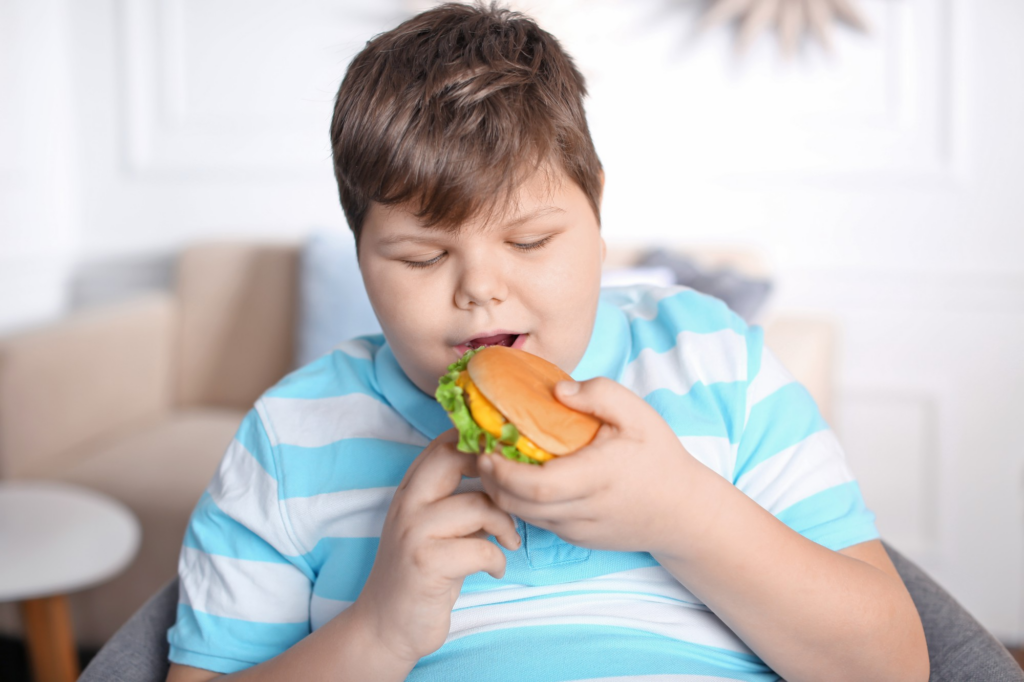Childhood obesity is a growing concern, especially in India. It refers to children having excessive body weight for their age and height. This condition often results from consuming more calories than they burn. Importantly, childhood obesity is not just about appearance; it’s a serious medical condition. In India, the situation has become alarming, with nearly 14.4 million overweight children. The availability of high-calorie foods and a decrease in physical activity contribute significantly. Understanding the pervasiveness of childhood obesity health risks is key to identifying workable solutions.
Introduction
A growing problem is more kids getting diseases seen in adults. Type 2 diabetes, once uncommon, now affects many young who are overweight. Their sugar levels rise, causing serious health problems and dangers. Additionally, high blood pressure is not just an adult concern anymore. Kids who carry extra weight facing heart issues early on are at risk. Over time, these childhood obesity health risks will affect their overall quality of life.
People often think children will outgrow obesity naturally, but this isn’t true. Most kids end up keeping the extra weight and face potential chronic diseases. They face more risk of developing heart problems or cancers, leading to healthcare strains. Besides physical concerns, the mental impact is severe. Many suffer from low self-esteem and experience anxiety, rooted in bullying experiences as kids. Tackling these childhood obesity health risks sooner helps change the future outlook.
Recognizing the Health Risks Associated with Childhood Obesity
India’s rich food culture is filled with flavor and variety. Many popular dishes contain many calories, but fewer nutrients the body needs. Ghee-laden curries and fried snacks are tasty but contribute to weight issues. Busy city lives mean people eat more processed foods, adding to calorie intake.
Changing how we eat is essential for children’s health. Choose nutritious meals instead of fried options, cutting down sugary foods helps too. Adding more fruits and vegetables at home builds a healthy eating habit early.
Children used to spend much time playing outside in the past. Nowadays, urban life and technology pull them towards screens over swings. Safety worries in cities mean parents keep kids inside, reducing outdoor playtime. This lack of movement makes children gain weight quickly. Including regular exercise like evening walks or morning yoga can help.
Some people think a chubbier child is a healthy one. Friends and family see extra pounds as a sign of good health. In truth, being overweight leads to health problems sooner than expected. It’s important to change these beliefs around kids’ health. Share information about the right weight for kids with all families. Teach the difference between being at a healthy weight and obesity for better futures.
Exploring Cultural and Societal Contributors
Introducing vibrant, wholesome meals can transform eating habits at home. Adding a serving of vegetables or picking fruit over chips works wonders. Like home, schools have a vital role by limiting sugary drinks. Teaching kids about nutrition helps them make good food choices. Getting children involved in meal prep sparks interest in healthier foods.
Physical activity can feel fun with family team sports or games. Weekend hikes or cycling mix adventure and exercise for everyone. Setting daily targets like 30 minutes of simple workouts makes regular exercise easier. These activities become more fun when enjoyed together as a family.
Public health initiatives help tackle childhood obesity by offering recreational activities. Community centers give kids places to play and stay active safely. Health fairs teach the balance and moderation needed for a healthier lifestyle. Collaborations offering low-cost exercise programs can encourage more participation and awareness. Teaching about food balance builds strength against childhood obesity health risks.
Dispelling Myths and Misconceptions
The belief that childhood obesity is all because of genetics is false. Genetics matter somewhat, but how you live is the real game-changer. Families who eat fast food often see more weight problems in their kids. Focusing on good habits instead of who you are is key.
Some think skipping meals helps you lose weight. This can make things worse, especially for kids. It causes overeating later in the day, which isn’t good. Eating a balanced diet keeps weight in check and energy levels high. Low-fat snacks aren’t always better, as they often have more sugar.
People often say kids get enough exercise simply by playing outside. But regular physical activity should be consistent for health benefits. Kids who walk or bike to school get some extra activity too. Losing weight isn’t the only goal—healthy habits are important too. Discard this myth to boost children’s health.
Conclusion
Getting a handle on childhood obesity health risks needs everyone involved. Parents can help by setting good examples for their children. Schools should prioritize physical activities and teach about healthy eating early.
Communities coming together will be key to tackle childhood obesity health risks. When we all share the knowledge and join forces, great change can happen. It takes everyone to push towards a healthier future for our kids.
